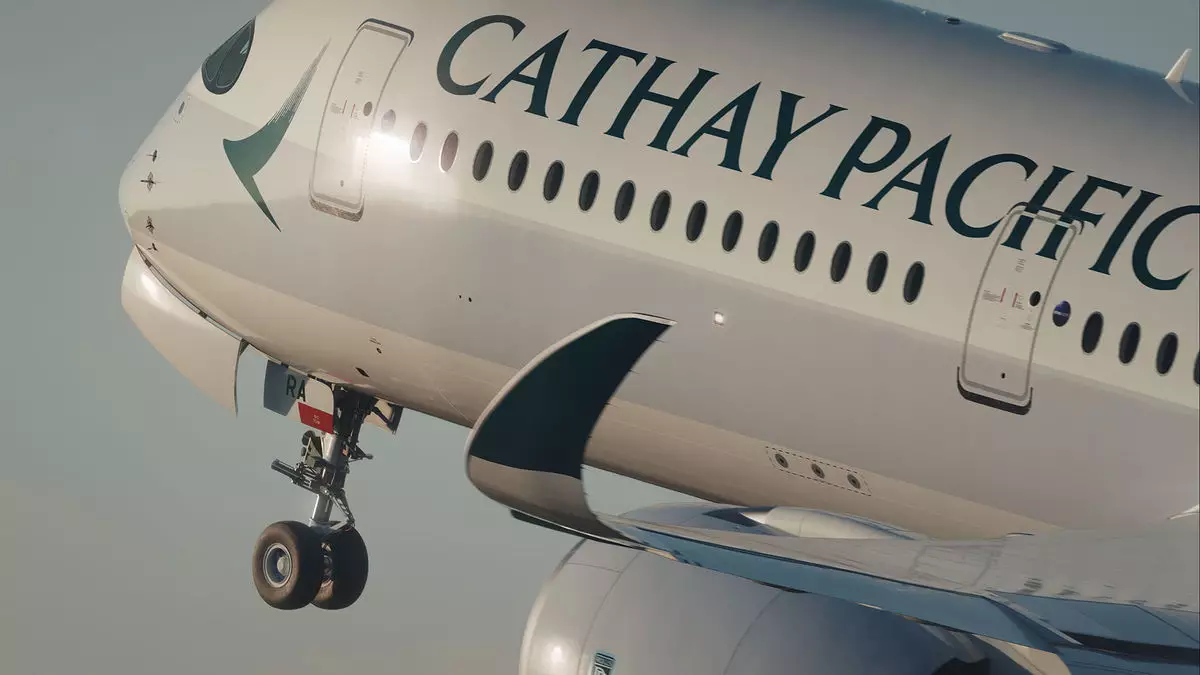In light of a recent in-flight incident, the European Aviation Safety Agency (EASA) has mandated that airlines perform a comprehensive inspection of fuel hoses on a specific subset of Airbus A350 aircraft. This directive emerged following an alarming engine fire that occurred on a Cathay Pacific flight shortly after takeoff. Such incidents highlight the critical need for stringent safety measures in the aviation industry, particularly concerning the maintenance of aircraft engines and components.
The incident in question unfolded on September 1 when a Cathay Pacific flight bound for Zurich from Hong Kong experienced an engine fire linked to its Rolls Royce Trent XWB engine. This troubling event prompted Cathay Pacific to initiate thorough inspections across its fleet of A350 aircraft. The airline identified 15 planes that required urgent replacement of their engine fuel lines—a situation that not only affected flight schedules but also raised serious questions about engine reliability and safety standards across the fleet. Over a brief period, Cathay Pacific was compelled to cancel 90 flights, a drastic measure reflecting the gravity of the situation.
EASA’s inspection mandate specifically targets the A350-1000 variant powered by the XWB-97 engine, totaling 86 aircraft worldwide. Airlines are instructed to conduct these checks within a time frame that varies from three to 30 days, contingent on each engine’s operational history. This proactive approach underscores the regulatory body’s commitment to preventing potential disasters and ensuring that airlines implement the highest safety protocols to protect passengers.
The repercussions of Cathay Pacific’s experience have rippled through the aviation sector, prompting other airlines to take precautionary measures. For instance, Singapore Airlines has initiated inspections of its A350 fleet, although its aircraft are powered by a different engine variant, the XWB-84. Japan Airlines has similarly responded by inspecting its A350-1000 and A350-900 fleet, further demonstrating a collective industry commitment to rigorous safety practices.
Meanwhile, Delta Air Lines, the only American operator of the A350, remains unimpacted by these new directives since its fleet operates on the XWB-84 variant. The FAA has deemed no additional inspections necessary for Delta, allowing the airline to continue its operations without disruption.
The recent incident involving Cathay Pacific serves as a catalyst for enhancing safety measures within the aviation industry. While immediate responses from various airlines are indicative of a proactive stance, the broader implications compel stakeholders to reevaluate maintenance practices and regulatory standards. As aircraft technologies evolve, the importance of stringent monitoring and accountability in the aviation sector comes into sharper focus, ensuring passenger safety remains paramount. The industry must take these lessons to heart, fostering an environment where safety is the foremost priority, ultimately leading to greater public confidence in air travel.


Leave a Reply